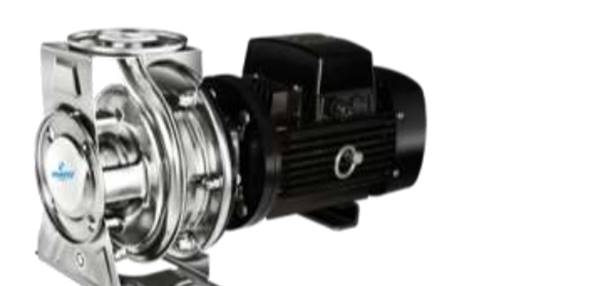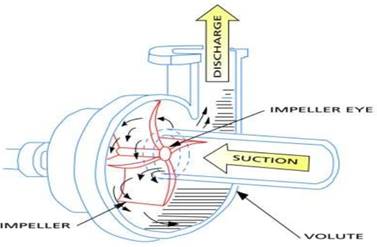Centrifugal Monoblock Pump
Parts of a Centrifugal Monoblock Pump
The components of a centrifugal monoblock pump can be categorized into rotary and stationary elements:
Rotating Components:
- Impeller
- Impeller blades
- Shaft
Stationary Components:
- Pump casing
- Bearing
- Inlet and outlet valve
- Suction nozzle
- Discharge nozzle

Understanding Key Components
Pump Casing:
Usually crafted from cast iron, the pump casing houses the impeller and connects to suction and discharge nozzles. It is often split horizontally for easy impeller removal, held together by bolts and location pins. Volute casing, featuring a spiral design, and diffusing casing, with guide blades, are the two main types.
Motor:
The motor, typically a completely enclosed induction motor, provides the mechanical power to drive the pump impeller. Known for its simplicity, compactness, cost-effectiveness, and low maintenance requirements, this type of motor is widely used.
Impeller:
As the main rotating component, the impeller generates centrifugal force to move fluid both axially and radially. Crafted from close-grained cast iron or cast steel, the impeller’s design and flow direction play a crucial role in pump classification.
Shaft:
The shaft transfers mechanical torques from the motor to the impeller during pump operation.
Inlet and Outlet Valves:
These valves facilitate fluid suction into the impeller’s eye and discharge it to the desired area, respectively.
How a Centrifugal Monoblock Pump Works
Upon powering the pump, the impeller’s rotation draws fluid to its center (the impeller’s eye). As the impeller continues to spin, centrifugal force propels the fluid outward, and impeller blades increase fluid speed. The fluid then enters the volute casing, where high velocity transforms into pressure energy, leading to increased fluid pressure. Finally, the fluid discharges through the outlet valve to its intended destination. The volute chamber’s design minimizes turbulence and shock, ensuring smooth energy conversion.

Pre-conditioning and Maintenance
Before operation, certain pre-initiation conditions must be met, including priming the pump with water and checking the correct direction of revolution and starter wiring. Regular maintenance involves mechanical inspections, lubrication, and electrical inspections. Lubrication guidelines must be followed to prevent bearing damage.
Selecting the Right Pump
Choosing the right centrifugal monoblock pump involves considering parameters such as pump head, structural material, exit rate, inlet and outlet size, and cost. The pump’s intended application and required performance metrics should guide the selection process.
Troubleshooting Common Issues
For effective troubleshooting, it’s essential to identify and address issues like insufficient pump discharge, low total head development, or the pump not running. Addressing problems promptly ensures prolonged and efficient pump performance.
Conclusion
In summary, this comprehensive guide sheds light on the intricacies of centrifugal monoblock pumps, emphasizing their components, working principles, applications, advantages, and disadvantages. By understanding these aspects, you can make informed decisions when selecting, operating, and maintaining centrifugal monoblock pumps for diverse applications.
